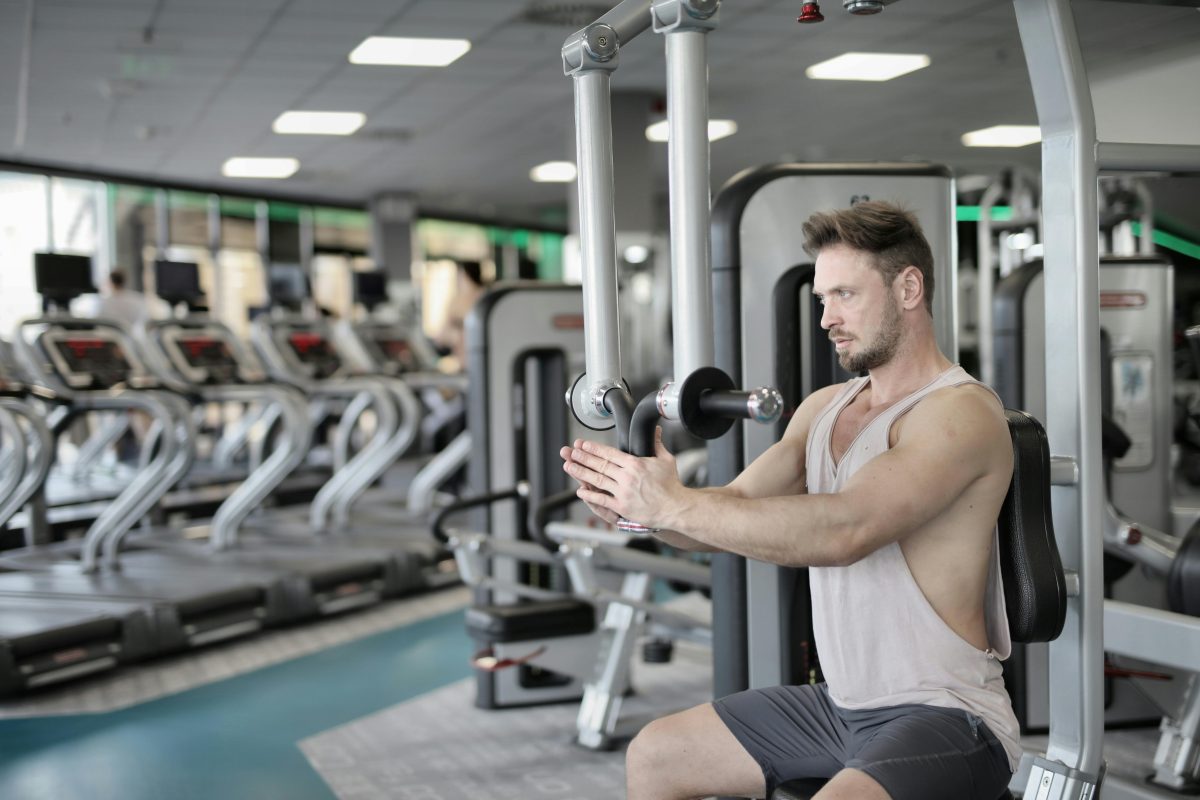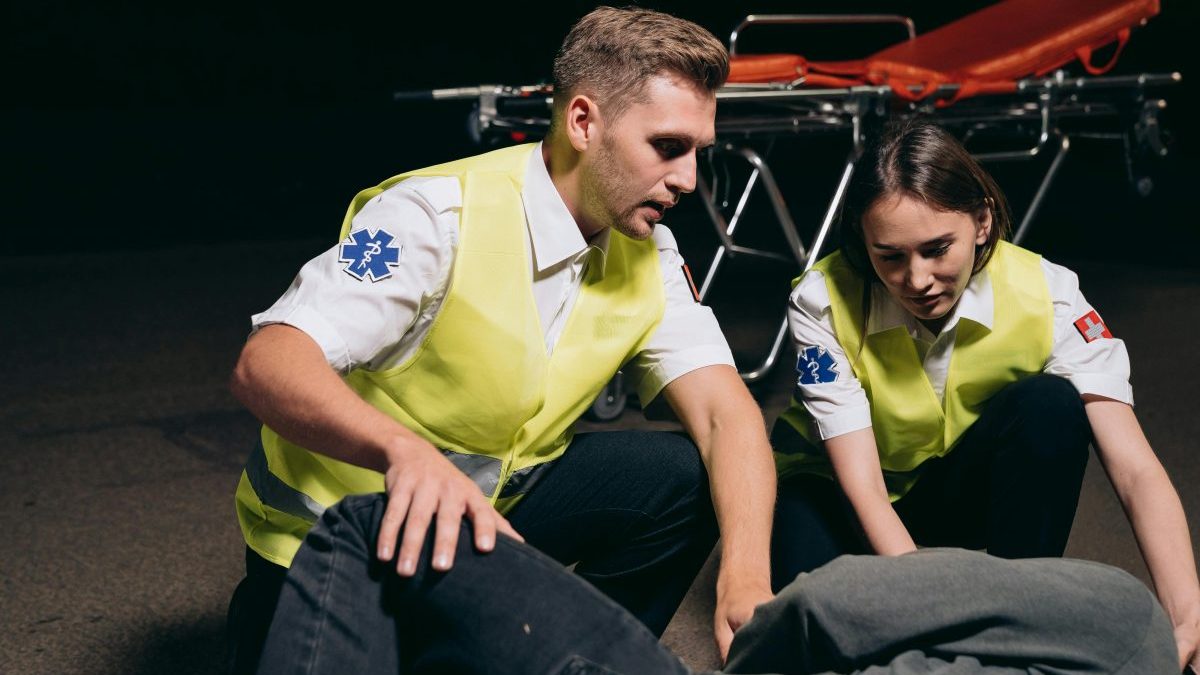Last Updated on: 14th July 2024, 09:32 am
Understanding the Risks of Weightlifting

Weightlifting, while immensely beneficial, carries its share of risks. Common injuries include:
- Strains
- Sprains
- Tears
These injuries primarily stem from overtraining and improper technique, two pitfalls that are surprisingly easy to fall into. Overtraining not only exhausts the body but also increases the likelihood of injury, making rest days as crucial as workout days.
Improper technique, on the other hand, can turn even the simplest exercises into hazards. It’s a silent threat, often going unnoticed until injury strikes. This is where the importance of professional guidance shines, transforming potential risks into stepping stones towards greater strength and resilience.
Psychological factors also play a significant role. The drive to push limits, while admirable, can sometimes cloud judgment, leading to overexertion. Similarly, the pressure to perform, whether self-imposed or from external sources, can prompt individuals to ignore the warning signs their bodies send, exacerbating the risk of injury.
Understanding these risks is the first step towards mitigating them. By acknowledging the potential for injury, weightlifters can adopt a more mindful approach to their training, prioritizing safety and longevity in the sport they love.
The Importance of Proper Technique

Mastering the basics of stance, grip, and posture is the cornerstone of injury prevention in weightlifting. These fundamentals are not just the first steps in a weightlifter’s journey; they are the foundation upon which all advanced techniques are built. A solid base ensures that each lift is performed with maximum efficiency and minimum risk.
Enter the role of a qualified coach or trainer. This professional’s keen eye can spot and correct the subtlest errors in technique, errors that untrained eyes might miss. Their guidance is invaluable, turning good practices into great ones, and ensuring that each movement is executed with precision. A coach not only provides immediate feedback but also fosters a culture of safety and continuous improvement.
Video analysis has emerged as a powerful tool for technique improvement. It allows for a detailed, frame-by-frame review of a lifter’s form, offering insights that are often invisible in the heat of the moment. This technology, when used correctly, can accelerate a weightlifter’s progress, helping to refine technique, enhance performance, and, most importantly, prevent injury.
Together, these elements form a triad of injury prevention. They underscore the importance of not just lifting, but lifting right. With the right stance, grip, and posture; the guidance of a skilled coach; and the insights provided by video analysis, weightlifters can enjoy a long, healthy, and successful journey in the sport.
Strength and Conditioning Essentials

Developing a balanced workout routine is paramount for weightlifters aiming to prevent injuries. A well-rounded regimen encompasses:
- Primary lifts
- Targeted strength and conditioning exercises
These components work in harmony, ensuring that all muscle groups receive the attention they need. This balance is crucial for avoiding overuse injuries and promoting overall muscular health.
The significance of core strength in injury prevention cannot be overstated. A strong core acts as the body’s foundation, supporting all other movements. It stabilizes the spine, pelvis, and shoulder girdle, creating a solid base for powerful, injury-free lifting. Core exercises, therefore, are not just supplementary; they are central to a weightlifter’s success.
Incorporating flexibility and mobility work into a training program is equally essential. Flexibility improves the range of motion, while mobility exercises enhance the ability to move freely and efficiently. Together, they ensure that joints can handle the stresses of lifting, reducing the risk of strains, sprains, and other injuries. This focus on flexibility and mobility complements strength training, creating a comprehensive approach to injury prevention.
By weaving these elements—balanced routines, core strength, and flexibility/mobility work—into the fabric of a training program, weightlifters can build a resilient body capable of withstanding the rigors of their sport. This holistic approach not only enhances performance but also safeguards against the setbacks that injuries can cause.
Equipment and Gear: Enhancing Safety and Performance

Choosing the right weightlifting shoes is akin to laying a solid foundation for a house. These specialized shoes, with their elevated heels and sturdy soles, improve stability and posture during lifts. They enable a deeper squat while maintaining form, reducing the risk of injury. It’s not just about lifting more; it’s about lifting right.
The role of belts, wraps, and sleeves extends beyond mere support; they are the guardians of your body’s vulnerable areas. A well-fitted belt braces the core, enhancing intra-abdominal pressure and safeguarding the spine during heavy lifts. Wraps and sleeves, on the other hand, stabilize joints and muscles, providing both warmth and compression. This support system minimizes the risk of overextension and strain, allowing for safer, more effective training sessions.
Understanding when and how to use weightlifting accessories is crucial. These tools are not crutches but enhancers of performance and safety. For instance, a lifting belt is most beneficial during exercises that load the spine, such as squats and deadlifts. Similarly, knee sleeves are ideal for movements that place significant stress on the knees. The key is to use these accessories judiciously, complementing a well-rounded strength and conditioning program. This strategic approach ensures that each piece of gear contributes to your ultimate goal: lifting heavier, safer, and more efficiently.
Integrating the right equipment and gear into your training regimen is a game-changer. It’s about more than just the immediate boost in performance. These tools, when used correctly, play a pivotal role in injury prevention, ensuring that your journey in weightlifting is both successful and sustainable.
Nutrition and Recovery: The Foundation of Injury Prevention

The Importance of a Balanced Diet for Weightlifters
A balanced diet is the cornerstone of any weightlifter’s regimen. It fuels the body for peak performance and aids in the repair of tissues damaged during intense sessions. Proteins, carbohydrates, and fats must be consumed in the right proportions. Proteins rebuild muscle, carbohydrates replenish energy stores, and fats support hormone function. This nutritional harmony accelerates recovery, fortifying the body against future injuries.
Hydration Strategies to Prevent Cramps and Injuries
Hydration is more than just drinking water; it’s a strategic element in injury prevention. Adequate fluid intake maintains muscle elasticity and joint lubrication, significantly reducing the risk of cramps and strains. Weightlifters should drink water consistently throughout the day, not just during workouts, and incorporate electrolyte-rich beverages post-training to restore balance and prevent dehydration-related injuries.
Sleep and Rest: The Overlooked Components of Recovery
Sleep and rest are the unsung heroes of recovery. During sleep, the body undergoes profound healing and growth processes, making adequate rest non-negotiable for injury prevention. Aim for 7-9 hours of quality sleep per night, and embrace rest days as opportunities for the body to rebuild stronger. This deliberate pause not only prevents overtraining but also ensures that each training session is approached with a body that’s fully primed and ready.
Together, a balanced diet, proper hydration, and sufficient sleep form the triad of injury prevention for weightlifters. By prioritizing these aspects, athletes can enhance their performance, extend their careers, and most importantly, maintain a healthy, injury-free body.
Recognizing and Responding to Early Signs of Injury

Discerning between muscle soreness and pain is critical. Soreness typically emerges after a new or intense workout and is a dull, diffuse discomfort that subsides with time. Pain, however, is a sharp, persistent sensation signaling that the body has been pushed beyond its limits or injured. It’s a clear message: something is wrong.
- Rest is often the first remedy for soreness, allowing muscles to recover and strengthen.
- Pain is a red flag. When pain alters your movement patterns or persists despite rest, it’s time to seek medical attention.
Physical therapy and rehabilitation play pivotal roles in recovery. These practices not only address the injury but also identify and correct underlying issues, such as imbalances or weaknesses, that may have contributed to the injury. Rehabilitation is a journey back to full strength, guided by professionals who tailor recovery programs to your body’s needs, ensuring a safe and effective return to lifting.
By responding promptly and appropriately to the early signs of injury, weightlifters can maintain their progress and safeguard their health. Remember, listening to your body and taking action when necessary is a sign of strength, not weakness.
Creating a Sustainable Weightlifting Practice

Setting Realistic Goals and Expectations
Embarking on a weightlifting journey begins with setting achievable goals. These objectives should stretch your capabilities while remaining within the realm of possibility. By aligning expectations with current fitness levels, progress becomes both measurable and motivating. This approach not only fosters a sense of accomplishment but also guards against the discouragement that often accompanies unrealistic aspirations.
The Importance of Rest Days and Active Recovery
- Rest days are not a sign of weakness; they are a cornerstone of strength building.
- Active recovery, involving light exercise such as walking or yoga, further enhances this process.
Embrace rest and recovery as vital components of your training regimen.
Long-term Strategies for Health and Performance
Adopting a long-term perspective is crucial for sustained success in weightlifting. This means:
- Prioritizing form over ego.
- Gradually increasing weights.
- Listening to your body’s signals.
- Ensuring nutrition, hydration, and sleep are foundational elements that fuel performance and facilitate recovery.
By viewing weightlifting as a marathon rather than a sprint, you cultivate a practice that supports lifelong health and peak performance.
Together, these strategies form a blueprint for a sustainable weightlifting practice. They ensure that your journey is not only about lifting heavier weights but also about building a resilient, well-balanced body capable of withstanding the demands of this rigorous sport. By focusing on realistic goals, embracing rest, and adopting a holistic approach to training, you pave the way for a fulfilling and injury-free weightlifting career.
In Closing
Lifting right safeguards your journey. This resilience fosters not just strength but joy in the discipline. Through understanding risks, mastering technique, and embracing a holistic approach to training, weightlifters navigate the fine line between challenge and reward. Embrace these practices for a sustainable, injury-free lifting career, building not just muscle, but a foundation for lifelong health and performance. Let this be your call to action: lift smart, live fully.
Injury Prevention for Weightlifters FAQs
Yes, overtraining can significantly increase the risk of injury in weightlifting by leading to fatigue, decreased performance, and compromised recovery. When the body is not given adequate time to rest and repair, it becomes more susceptible to injuries such as strains, sprains, and stress fractures. It’s essential to follow a balanced training program that includes rest days and varies the intensity and volume of workouts.
Weightlifters can prevent shoulder injuries by incorporating rotator cuff strengthening exercises and ensuring proper form during lifts. Additionally, maintaining a balanced workout routine that includes adequate rest and recovery for the shoulder muscles can help avoid overuse injuries. It’s also important to gradually increase the intensity and volume of workouts to allow the shoulder to adapt.
Proper nutrition contributes to injury prevention in weightlifting by supporting muscle repair, growth, and overall body recovery. Adequate intake of protein, carbohydrates, fats, and micronutrients ensures the body has the necessary building blocks to recover from workouts and strengthen. Staying hydrated and managing nutritional intake can also help prevent cramps and fatigue, reducing the risk of injury during lifting sessions.
Technique greatly affects the risk of injury in weightlifting, as improper form can lead to undue stress on muscles, joints, and tendons. Focusing on mastering the correct technique for each lift can ensure that the load is distributed appropriately, reducing the risk of overuse injuries and acute damage. Regular feedback from a coach or experienced lifter can be invaluable in correcting and refining technique to prevent injuries.
Sleep is critically important in the injury prevention strategy for weightlifters as it allows for physical and mental recovery. Adequate sleep supports muscle repair, growth, and hormonal balance, which are vital for recovery and reducing the risk of injury. Ensuring sufficient and quality sleep can enhance performance, focus, and energy levels, further contributing to injury prevention.
Wearing a belt while weightlifting can be beneficial for supporting the lower back during heavy lifts, such as squats and deadlifts. However, it should not be relied upon as a substitute for proper form and core strength. Belts are most effective when used by experienced lifters to enhance intra-abdominal pressure and stability during maximal or submaximal lifts.
Foam rollers can benefit weightlifters in injury prevention by helping to increase blood flow and release muscle tightness, which can improve flexibility and decrease the risk of muscle strains. Regular use of foam rolling as part of a warm-up or cool-down routine can aid in the recovery process by facilitating the removal of lactic acid and reducing soreness. This practice can also help in maintaining a greater range of motion, which is crucial for performing lifts with proper form and preventing injuries.
The most common injuries for weightlifters include muscle strains, joint injuries, and tendonitis. These injuries often occur due to improper lifting techniques, overuse, or insufficient warm-up and stretching. It’s crucial for weightlifters to focus on form and gradually increase their load to prevent these issues.
The best way to warm up before weightlifting to prevent injuries is to perform dynamic stretches and light cardiovascular exercises to increase blood flow to the muscles. This type of warm-up prepares the muscles and joints for the range of motion and stresses they will experience during lifting. Incorporating specific warm-up sets with lighter weights before the main lifts can also help acclimate the body and reduce the risk of injury.
Flexibility plays a crucial role in preventing weightlifting injuries by allowing for a greater range of motion and reducing the risk of muscle strains and tears. Regular stretching and mobility exercises can improve flexibility, making it easier to maintain proper form during lifts. This not only helps in preventing injuries but also can enhance overall performance by allowing for more efficient movement patterns.
Orlando is a all round athlete from Australia, now resident in Germany. His sports of passion of American Football(Offensive line), weight training and indoor rock climbing where he uses his 195cm wing span to his advantage.



